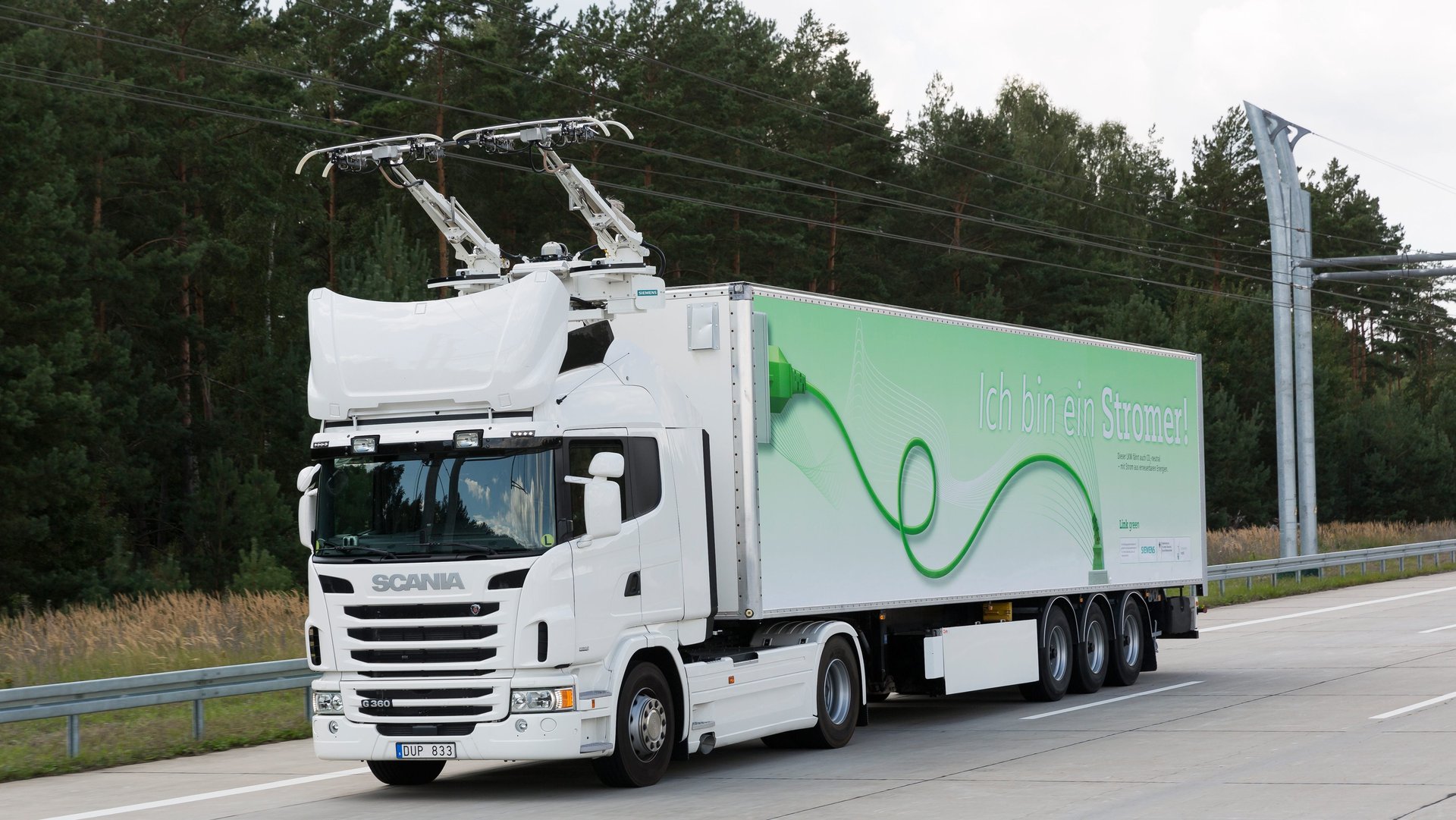Siemens says it can power unlimited-range electric trucks using a 150-year-old technology
The world’s cargo fleet is moving from fossil fuels to electrons. But powering them won’t be simple. With today’s technology, driving a semi-truck 500 miles (804 kilometers) would require a 23-ton lithium-ion battery, half the weight of the truck itself. Fuel cells would need a massive, $2 million hydrogen fuel tank to go the distance. Embedding wireless charging coils in roadbed would be expensive and inefficient.


The world’s cargo fleet is moving from fossil fuels to electrons. But powering them won’t be simple. With today’s technology, driving a semi-truck 500 miles (804 kilometers) would require a 23-ton lithium-ion battery, half the weight of the truck itself. Fuel cells would need a massive, $2 million hydrogen fuel tank to go the distance. Embedding wireless charging coils in roadbed would be expensive and inefficient.
But an invention first deployed in 1870 to power trains and streetcars might be the perfect fit: catenary, overhead electrical wires commonly found around the world. The German engineering company Siemens, presenting at an electric vehicle conference in Montreal this month, argues it can power unlimited-distance electric trucks with intermittent overhead wires that provide enough energy for fast-moving, long-haul highway journeys.
With on-board batteries added to the trucks, the company estimates all of Germany’s roads could be can be outfitted for long-distance electric hauling with just 4,000 km of wire. Trucks would be able to recharge on highways and operate on battery power while on rural and urban streets. The system would cost a fraction the price of alternatives like hydrogen fuel cells, and deliver as much as €200 billion ($227 billion) in net savings over 30 years compared with other approaches, reports IDTechEx, which attended the presentation.
The technology is ready to go. New advances in catenary systems allow hybrid vehicles to switch seamlessly between overhead charging and battery power at high-speeds. For now, the trucks are diesel hybrids, but extensive overhead wires and efficient batteries would permit the vehicles to eliminate internal combustions engines entirely.
Siemans, joined by Volvo, Scania, and several national and local governments, is already starting field trials. Sweden launched the first such trucks on public roads on June 22 with its E15 test highway north of Stockholm . The country plans to eliminate fossil fuel from its transportation sector by 2030. California’s own eHighway is deploying similar trucks along a 1-mile (1.6 kilometers) stretch between ports in Los Angeles and Long Beach though 2017.